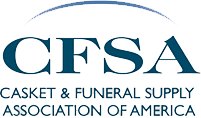Cremationists were overloaded with work in 2020 because of the COVID-19 pandemic, but new data from the Cremation Association of North America shows that the cremation rate overall continued its slow but steady and predictable increase.
Cremations represented 56.1% of death cases in the United States last year, a 1.5 percentage-point increase over the 2019 rate of 54.6%, according to CANA. The small bump surprised CANA Executive Director Barbara Kemmis so much, she didn’t believe it at first.
“I really thought that this would be the year that that steady growth would break, and I challenged our consultant to redo his analysis at least four different ways to persuade me that this was really the case,” Kemmis said on an episode of the CFSA Connect podcast released May 27. “How could it be? How could it be that a pandemic that impacted every area of our lives, shook up our economy, shook up everything else wouldn’t impact the adoption of cremation?”
Kemmis said she had members telling her in the middle of the pandemic that it felt like their cremation rates were spiking. CANA’s analysis shows that in some cases, that was true, particularly during regional surges of coronavirus-related deaths. But when the data was annualized across the entire year and normalized across the country, the numbers leveled out to maintain their same growth pattern of 1-2 percentage points year-over-year that the profession has seen each year for nearly 50 years.
Earlier research CANA conducted in the spring of 2019 with Homesteaders Life utilized focus groups of Baby Boomer women who chose cremation. While CANA research has found the population at-large tends to give cost as their number one reason for choosing cremation, this particular population group did so to fulfill the wish of their loved one, and they had no regrets afterward.
“They were pleasantly surprised at how personalized the experience was, with how they could really have everything they wanted. They could control the timeframe, they could keep the cremated remains close to them – that was a really important ‘selling point’ for them for cremation.”
Looking forward, Kemmis says they expect the increase in the cremation rate to slow down.
“We have a huge demographic shift coming with Baby Boomers aging and the peak of the Baby Boomer deaths, demographers think, is going to be somewhere between 2035 and 2040. So we felt it was really important to publish these projections because our statistics are used for business planning, to see which states are still in a rapid growth phase.”
That “rapid growth” typically levels off after a state has hit the 60% mark, at which point there is a deceleration in the cremation rate’s growth. CANA expects the national cremation rate to follow the same pattern. Currently at 56.1%, they predict continued 1.5 percentage-point growth each year until it hits 60%, then the growth will slow until it plateaus.
“We don’t know when that plateau is going to become permanent,” she said. “We predict 80%, but in Canada – which has a different pattern of cremation rates, they’ve been well ahead of us for a number of years – that plateau could be 90% or higher.”
You can find the entire interview at CFSAA.org/Podcast, including how the FEMA death benefit has impacted families who chose to cremate in the height of the pandemic, new memorialization trends they’re finding tend to accompany cremation services, and how Barbara come to work for a deathcare association when her formal training was in library sciences.
CANA’s annual conference is scheduled for Aug. 11 – 13 in Seattle.

